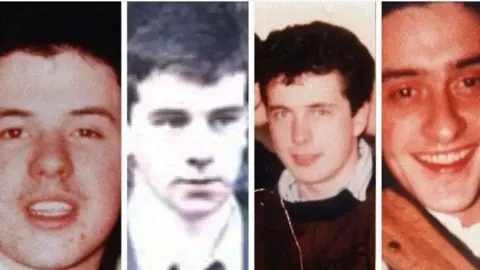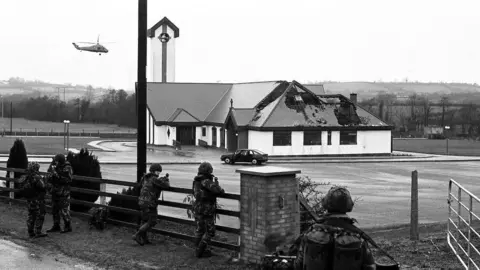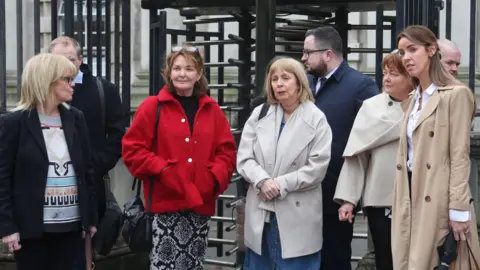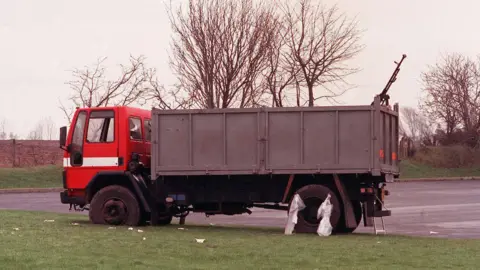Shooting of IRA men to be referred to prosecution service
 FAMILY HANDOUTS
FAMILY HANDOUTSA coroner who ruled SAS soldiers were unjustified when they opened fire killing four IRA men in an ambush at Clonoe, in County Tyrone, is to refer his findings to Northern Ireland's Director of Public Prosecutions (DPP).
Kevin Barry O'Donnell, 21, Sean O'Farrell, 22, Peter Clancy, 21, and Patrick Vincent, 20, died in February 1992, minutes after they had carried out a gun attack on Coalisland police station.
The soldiers opened fire as the men arrived at St Patrick's Church car park in a hijacked lorry which had a heavy machine gun welded to its tailgate.
Security forces had intelligence the car park would be used and 12 soldiers were in position behind a hedgerow.
 PACEMAKER
PACEMAKEROn Thursday, the coroner told Belfast's Royal Courts of Justice that he will refer the case to DPP Stephen Herron to review.
The coroner has the power to refer a case to the DPP if it appears to them that the circumstances of the death disclose that an offence may have been committed.
When a referral is received from the coroner, consideration will first be given to any further investigative steps that may be required before decisions as to prosecution can be taken.
Further criminal investigation of the case can only be undertaken by the Independent Commission for Reconciliation and Information Recovery (ICRIR).
 Pacemaker
PacemakerThe inquest into the circumstances of the killings, which opened in 2023, found more than 500 rounds were fired by the soldiers.
In statements made by the soldiers at the time, they claimed the use of lethal force was justified to protect their lives and others from the IRA unit.
Mr Justice Humphreys, who is Northern Ireland's presiding coroner, delivered his findings at an inquest for the four men on 6 February.
He found the use of lethal force cannot have been reasonable.
He said there was no attempt to arrest the four IRA men, even as they lay wounded.
The coroner also said the operation "was not planned and controlled in such a way as to minimise to the greatest extent possible the need for recourse to lethal force".
Mr Justice Humphreys added that state agencies had "perpetuated falsehoods" about the incident, having claimed at the time there had been a gun battle.
In fact, the IRA men had not fired on the soldiers.
'Overwhelmingly conclusive'
 PACEMAKER
PACEMAKERThe inquest findings generated political controversy and faced criticism from unionist and Conservative elected representatives.
Outside court on Thursday, solicitor Niall Murphy, who represents some of the bereaved relatives in the case, said: "It's a rule of law issue, and the families would hope and trust that the rule of law will be observed.
"The evidence that we all heard over the months of hearings was overwhelmingly conclusive.
"The state of evidence, therefore, for the consideration of the Public Prosecution Service is complete, and we would hope and trust that the PPS will come to its decisions as soon as possible."
